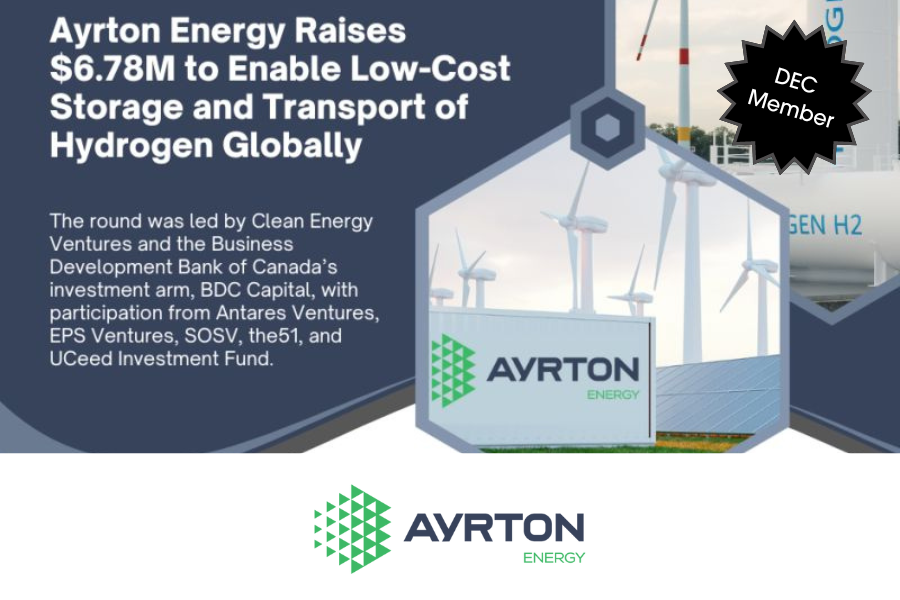Ayrton Energy Raises $6.8 Million
Source: | · AYRTON ENERGY · | September 24, 2024
Ayrton simplifies two major industry pain points with a novel liquid organic hydrogen carrier (LOHC) system compatible with existing liquid fuel infrastructure
Ayrton Energy, a developer of liquid organic hydrogen carrier (LOHC) technology, secured USD $6.8 million in seed financing to advance its low-cost, scalable approach to safe, efficient delivery of clean hydrogen. The round was led by Clean Energy Ventures and the Business Development Bank of Canada’s investment arm, BDC Capital, with participation from Antares Ventures, EPS Ventures, SOSV, the51, and UCeed Investment Funds. Ayrton Energy will leverage the financing to scale its proprietary technology, double the size of its team, and expand operations into energy hubs in the U.S.
Clean hydrogen is expected to deliver up to 85 gigatons in cumulative CO2 emissions reductions by 2050, and the market is expected to grow to $1.4 trillion annually by 2050, according to an outlook report by Deloitte. Two major bottlenecks stunting the growth of the clean hydrogen sector are the high costs of transport and lack of dedicated storage infrastructure. Clean hydrogen use in hard-to-abate industries like aviation and shipping will require dedicated infrastructure to enable practical, widespread hydrogen distribution and utilization. While fossil-based fuels like gasoline and natural gas are transported and stored via pipelines, railroad tank cars, and tanker trucks, the transport and storage of hydrogen is comparatively difficult and expensive today, requiring cryogenic temperatures and high-pressure containers.
Founded by mechanical engineer Natasha Kostenuk and chemist Dr. Brandy Kinkead, Ayrton is developing the only low temperature and low pressure LOHC hydrogen storage system to enable clean hydrogen at lower cost and higher safety than any storage solution on the market today. Ayrton’s energy-efficient solution allows for stable, long-term storage and transportation of hydrogen at room temperature using existing liquid fuel infrastructure.

